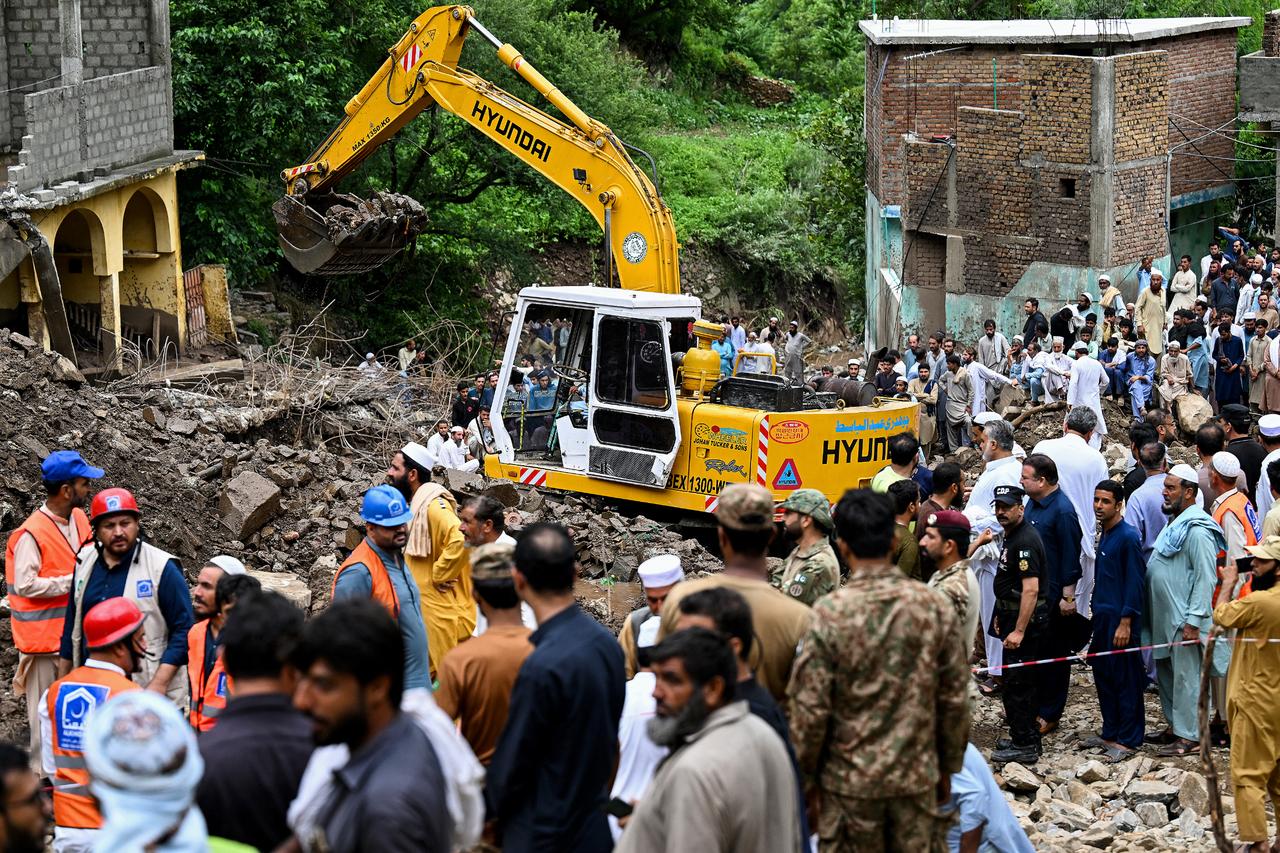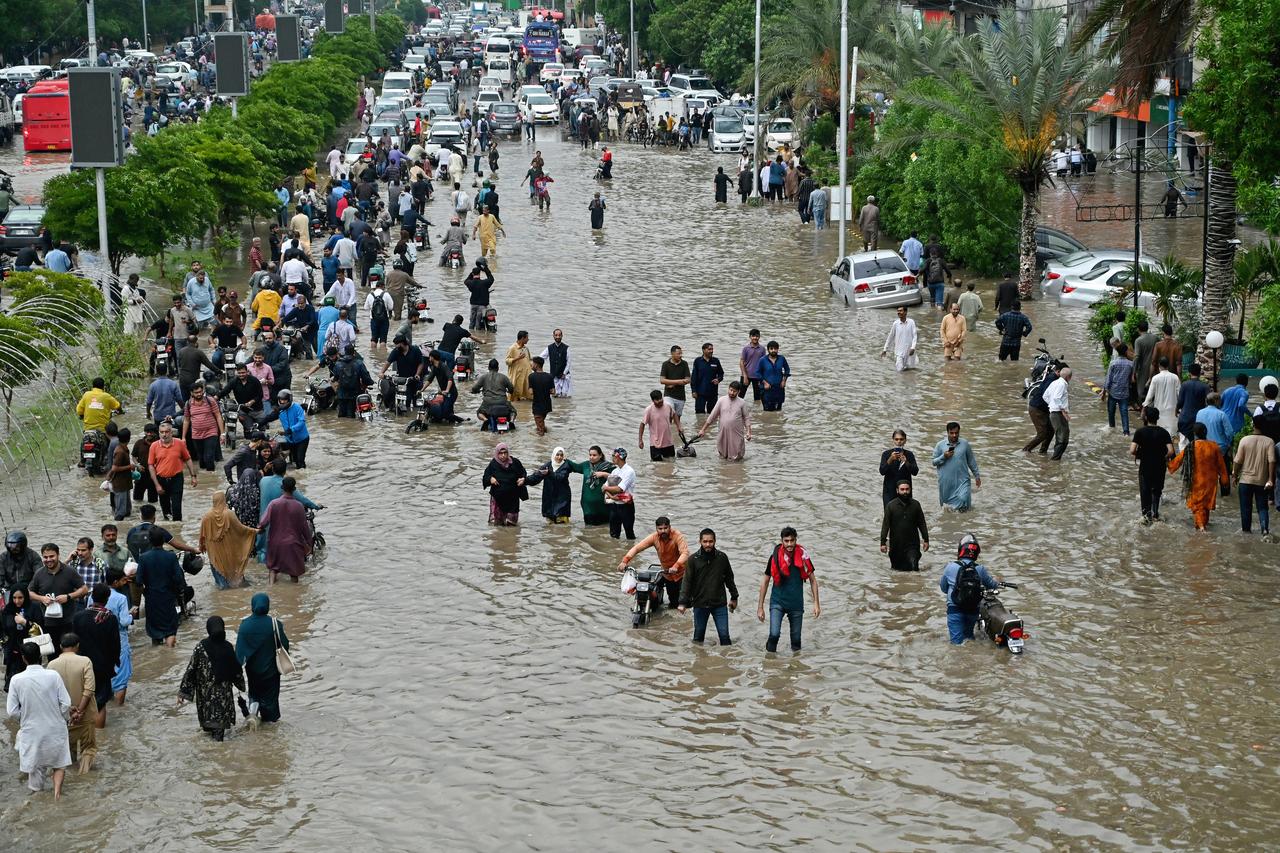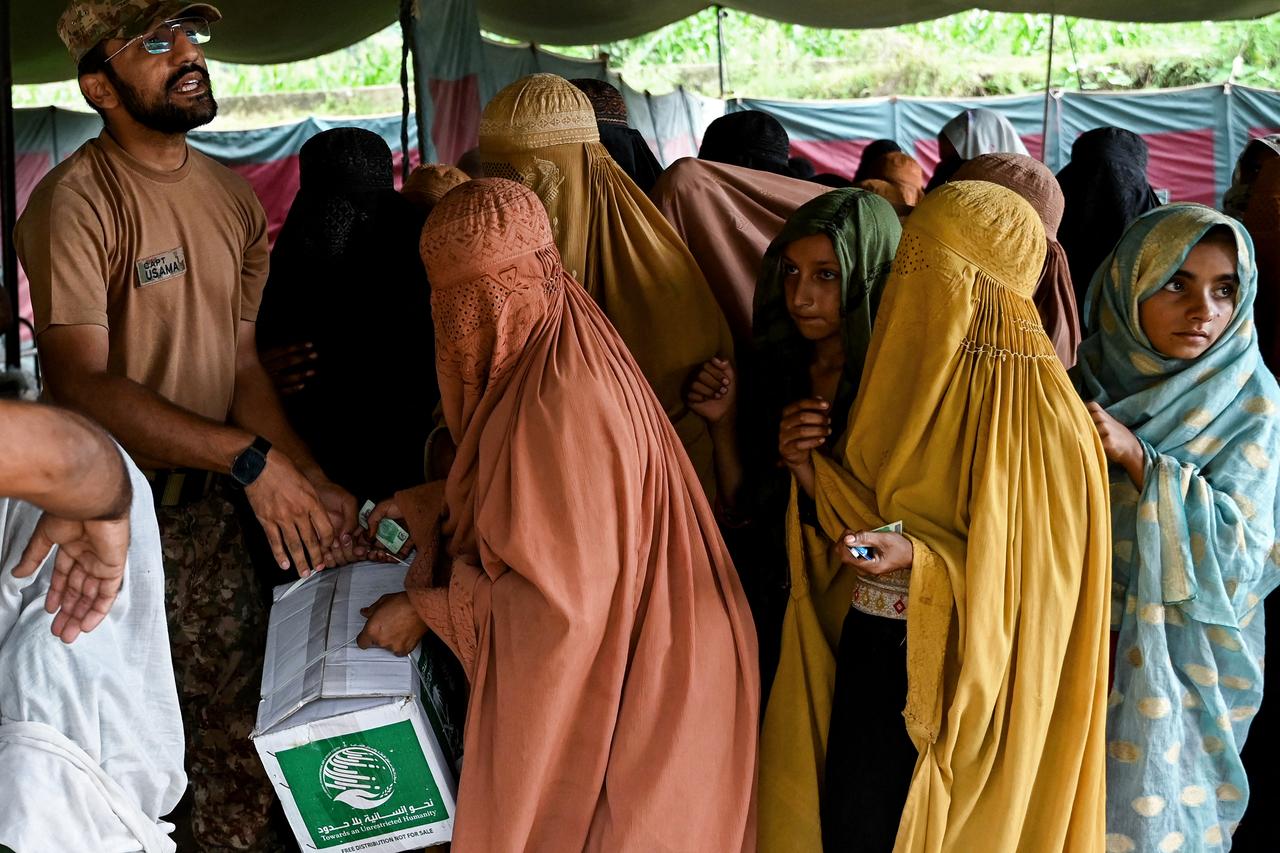
Since June 26, catastrophic monsoon rains have claimed at least 746 lives across Pakistan, according to the National Disaster Management Authority (NDMA). In the past 24 hours alone, 41 people have perished in rain-related incidents, mostly in Gilgit-Baltistan and Karachi.
In the mountainous northwest, the Buner district has experienced a devastating flash flood. Rescue teams, aided by army sniffer dogs, are tirelessly searching for almost 150 missing individuals. The death toll in Buner has sadly risen to 290.
Similarly, in the broader northwest, including Swabi and surrounding regions, flash floods triggered by cloudbursts have swept through towns within seconds, flattening homes and leaving 365 dead in just five days.
These flash floods have decimated livestock, homes and vital infrastructure, displacing countless families across Khyber Pakhtunkhwa.

Karachi, Pakistan’s largest city, has been inundated by historic rainfall levels, ranging from 80 mm to 178 mm figures which far exceed its drainage system capacity of merely 40 mm.
This deluge led to widespread flooding, power outages, communication breakdowns and disruption of flight services. At least seven people have died in the city amid the chaos. Nonetheless, restoration efforts have been swift, with most services back online within 8 to 12 hours.
Authorities issued flash flood warnings for southern districts, including Karachi, Hyderabad, Thatta, Badin, Mirpurkhas and Sukkur, forecasting up to 100 mm of rain within the next 24 hours, which could submerge highways, disrupt transport and damage utilities.
Prime Minister Shehbaz Sharif and Army Chief Asim Munir visited flood-impacted zones, promising financial aid, infrastructure repair, and cautioning against construction near riverbanks.
So far, 25,000 people have been evacuated. Essential supplies, tents, blankets, food and clean water are being distributed while efforts to restore power and reopen roads are underway. The government has already restored 70% of electricity and most affected roads in the north and northwest have been cleared.

Experts warn that cloudbursts "brutal rainstorms dumping over 100 mm in an hour" are becoming more frequent and intense thanks to climate change. These occur when moist monsoon winds collide with cold mountain air, creating sudden and destructive downpours.
Such events are notoriously hard to predict, though efforts are underway to enhance early warning systems using radar and improved monitoring networks.